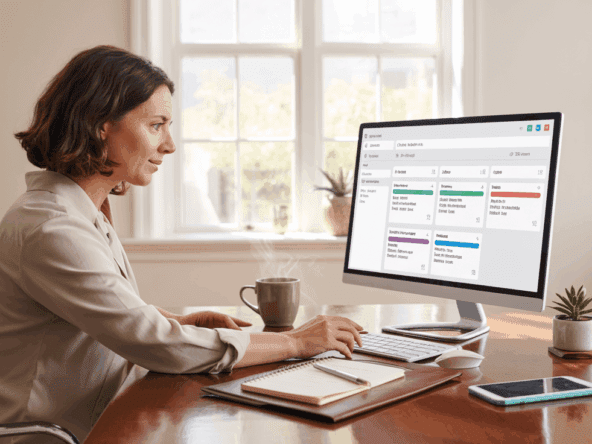Cold calling remains a fundamental strategy for professionals looking to generate leads and expand their client base, particularly in competitive industries like real estate. However, success in cold calling isn’t just about making endless calls. It’s about strategically enhancing your approach to improve conversation quality, build meaningful connections, and convert leads into appointments.
In this guide, we’ll explore practical techniques and strategies to maximize the effectiveness of your cold calling efforts.
1. Understand and Track Your Key Metrics
To improve cold calling outcomes, it is essential to track and understand your performance metrics. Knowing your call answer rates, conversation rates, and conversion rates helps pinpoint areas for improvement.
Key Metrics to Track:
- Call Answer Rate: The percentage of calls answered compared to the total calls made.
- Conversation Rate: The proportion of answered calls that turn into meaningful conversations.
- Conversion Rate: The number of conversations that result in appointments or potential business.
Example:
If you make 100 calls a day, track how many are answered, how many lead to substantial conversations, and how many of those result in a follow-up or appointment. Identifying patterns can reveal issues like calls being flagged as spam, which can be addressed by whitelisting your number or using verified calling services.
2. Enhance Connectivity and Maintain Professionalism
One of the most significant challenges in cold calling is ensuring your calls are received and not marked as spam. Tools like Follow Up Boss’s Call Trust can improve connectivity rates by preventing calls from being flagged.
Best Practices:
- Use Call Verification Tools: Services that legitimize your number reduce spam risk.
- Cycle Through Numbers: Regularly changing your calling number can prevent overuse and spam labeling.
- Professional Tone: Maintain a polite and engaging tone, regardless of the initial response.
Improving connectivity directly impacts the number of conversations you can initiate, increasing your chances of conversion.
3. Setting Boundaries and Managing Expectations
Cold calling is not just about the initial connection but also about setting clear boundaries and managing client expectations from the start.
Tips for Setting Boundaries:
- Clearly communicate your purpose and next steps.
- If handling high-value properties, clarify procedures upfront (e.g., proof of funds for luxury listings).
- Be transparent about your availability and follow-up process.
Example:
When contacting expired real estate listings, immediately outline the steps for scheduling a viewing or consultation. Setting expectations early fosters professionalism and clarity.
4. Improve Conversation Quality with Strategic Approaches
Cold calling often requires dealing with objections or negative responses. Building resilience and maintaining professionalism is key.
Strategies for Better Conversations:
- Use Scripts Smartly: Have scripts tailored for different situations (e.g., urgent viewings or initial interest).
- Empathize and Engage: Acknowledge concerns and steer the conversation towards solutions.
- Follow-Up with Persistence: Respectful and consistent follow-ups can turn initial rejections into future opportunities.
For example, if a client requests a same-day viewing, calmly explain the need for preparation time while expressing enthusiasm to accommodate their needs.
5. Leverage Technology for Efficiency and Impact
Modern cold calling is significantly more efficient when technology is integrated into the process. Using dialer systems connected to CRM platforms not only saves time but also improves data accuracy and follow-up consistency.
Recommended Tools:
- Mojo Dialer + Follow Up Boss CRM: Automates calling while logging interactions.
- Automated Text Follow-Ups: After an unanswered call, send a polite text like, “Hi, this is [Your Name]. Please give me a quick call back at your convenience.”
- Call Recording and Review: Analyze recorded calls to learn from mistakes and refine scripts.
Implementing these tools streamlines your workflow, allowing you to focus more on meaningful interactions rather than administrative tasks.
6. Commit to Continuous Improvement
Cold calling requires an adaptive mindset and a commitment to learning. Regularly reviewing performance and updating strategies ensures sustained success.
Ways to Improve:
- Review Recordings: Identify areas where the conversation could be more engaging.
- Participate in Role-Playing: Practice with colleagues to simulate different scenarios.
- Stay Updated on Best Practices: Adapt your approach based on new insights and changing client expectations.
Continuous self-improvement not only builds confidence but also keeps your strategies aligned with market realities.
Final Thoughts: Transform Cold Calling into a Winning Strategy
Cold calling remains a powerful tool when approached with intention and strategy. By tracking key metrics, maintaining professionalism, setting clear boundaries, using technology wisely, and continuously improving your techniques, you can significantly enhance your lead conversion rate.
Take Action:
Incorporate one or two of these strategies into your next cold calling session. Consistent application of these practices will lead to greater success and help you build lasting client relationships.




